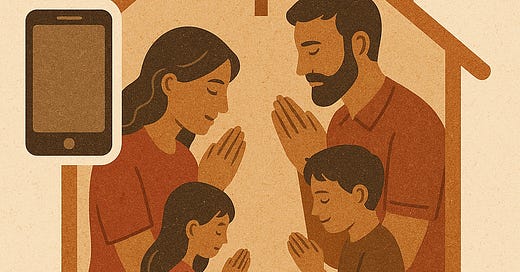Domestic Church in a Digital Age
How to Build a Holy, United Family Life in a World of Screens and Schedules
Biblical Foundation
The call to live as a holy family is deeply rooted in the story of salvation itself. In the Book of Genesis, we see the creation of man and woman as a divine act—God breathes life into them and blesses them with a mission of fruitfulness, unity, and stewardship. From the very beginning, marriage and family are not only natural institutions but sacred ones, bearing the image of God's creative love. The Holy Family of Jesus, Mary, and Joseph further embodies this divine ideal. In the Gospel of Luke, we glimpse their daily life—marked by prayer, humility, obedience, and mutual care—a model of sanctity within the ordinary.
St. Paul, in his letters to the Ephesians and Colossians, provides what are known as “household codes,” urging believers to treat one another with love, respect, and service, all grounded in their relationship with Christ. These teachings offer a framework for family life rooted in grace and responsibility. Throughout Scripture, God frequently uses the imagery of family—Father, Son, Bride, Bridegroom—to express the depth of His covenant love. This reveals the sacredness of familial relationships and their profound potential to reflect God’s own divine nature.
Modern Challenges
While the ideal of the holy family remains, modern families face unique and often overwhelming obstacles. One of the most pressing is digital distraction. With screens dominating nearly every moment—from dinners to car rides to bedtime routines—many families experience emotional distance even when they’re physically present. Competing schedules only compound the problem. Between work, school, sports, and social activities, families often find themselves functioning like co-workers or roommates rather than loving, unified households.
Cultural influences also play a significant role. The values promoted in mainstream media and online platforms frequently clash with Catholic teachings on love, sexuality, identity, and purpose. These messages can lead to confusion, especially among children and teens. Moreover, families today often feel the strain of intergenerational disconnect. Grandparents, parents, and children may live under the same roof or share the same faith, but struggle to truly relate to one another due to differing life experiences, expectations, and use of technology.
Keep reading with a 7-day free trial
Subscribe to Biblical Catholic Living to keep reading this post and get 7 days of free access to the full post archives.




